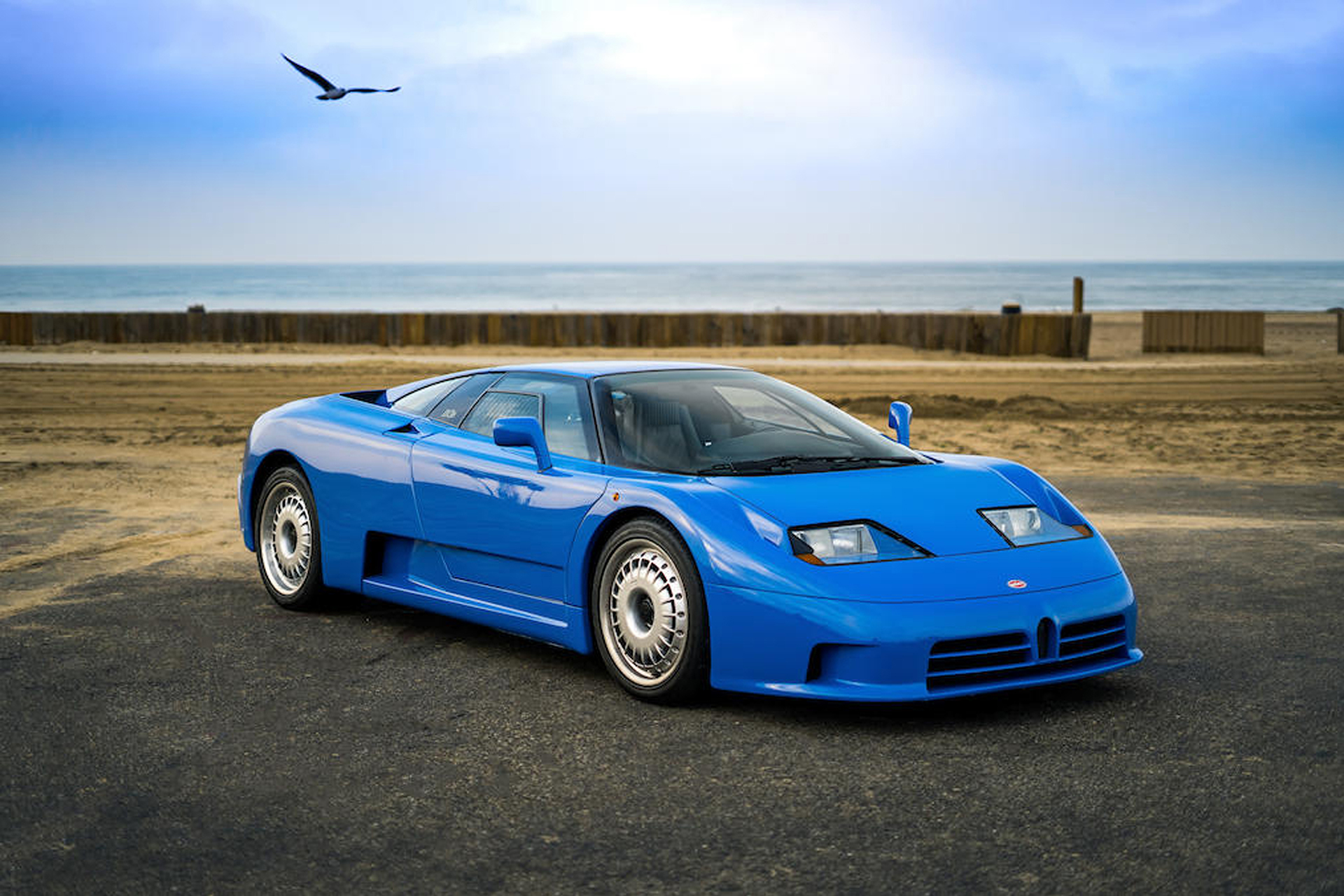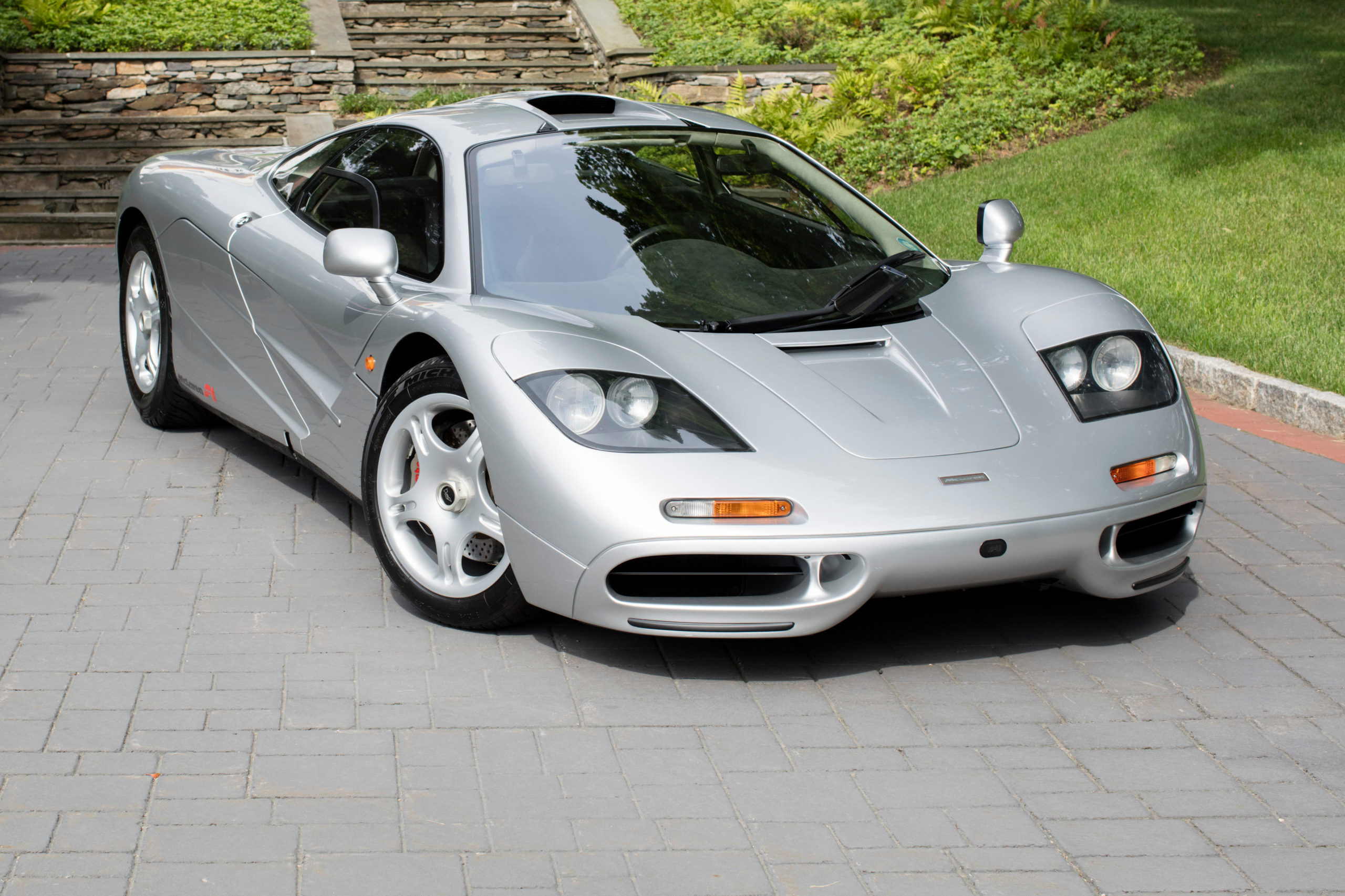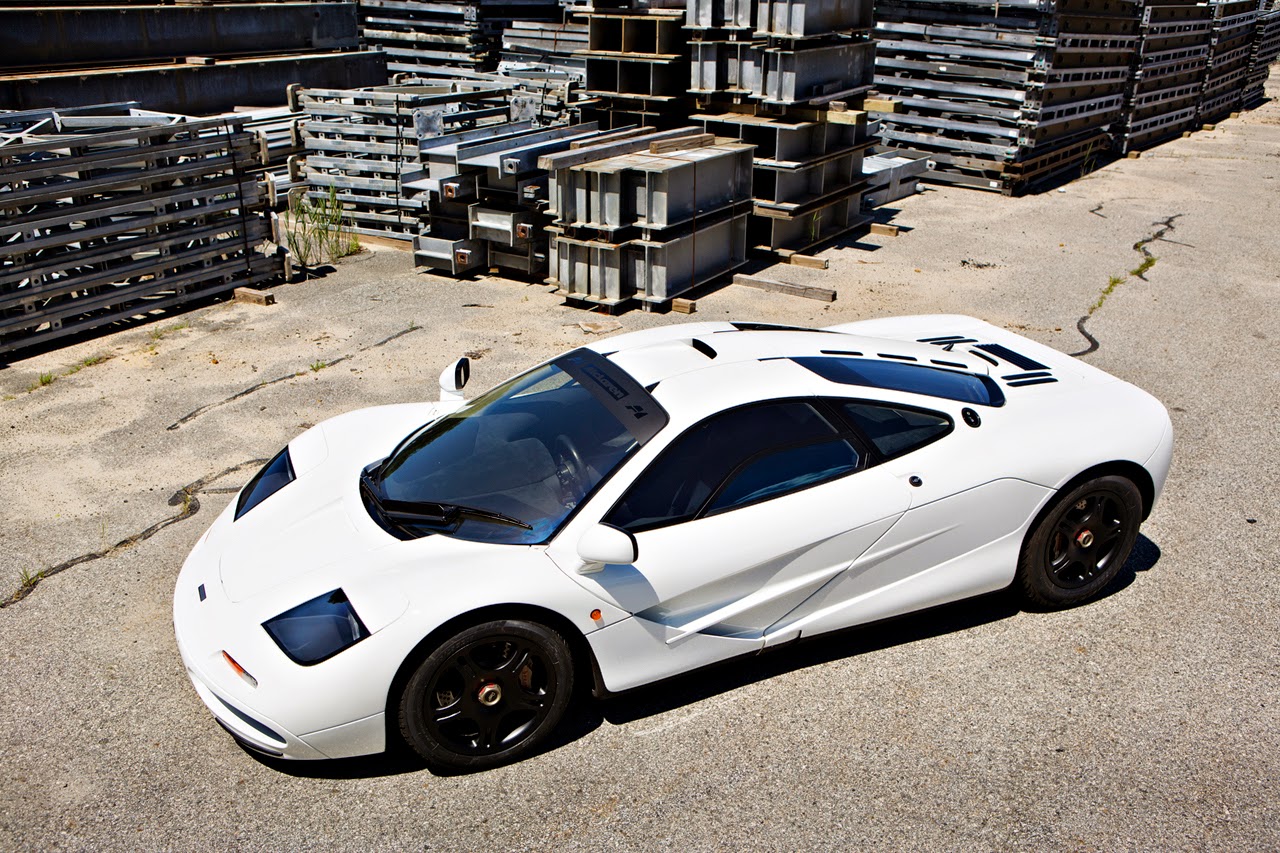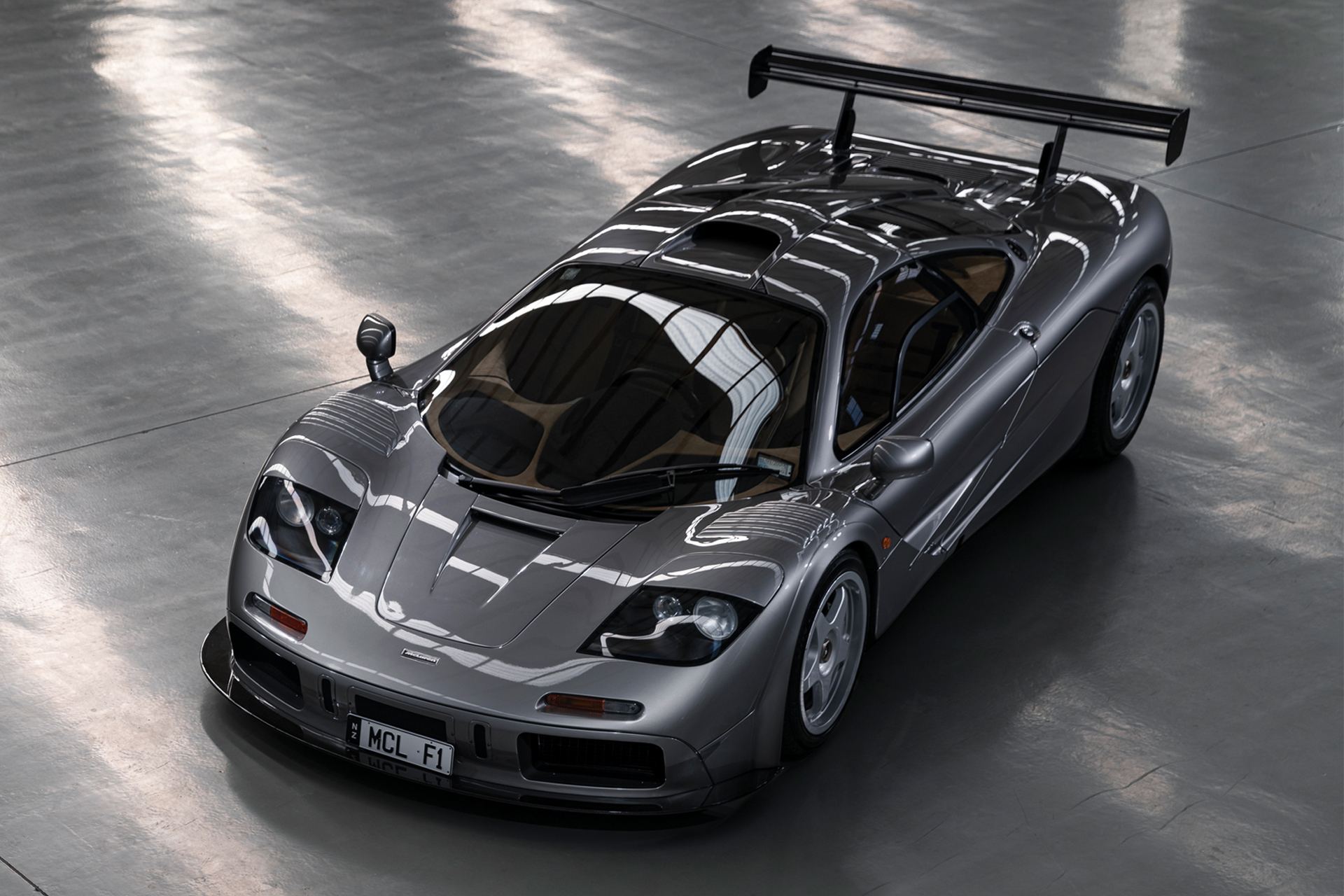Hypercar chapter 2: Bugatti EB 110 versus McLaren F1. What a match!
Cliff Goodall’s view
Photo credit: RM Sotheby’s, Bonhams, Gooding, McLaren
If, at the end of the 1980s, you were a wealthy Arab oil producer or a New York stock exchange trader, would never have accepted the fact that your neighbour drove a car not necessarily better but at least comparable to yours, would you? Never! You wanted more.
Romano Artioli is a man from that era: The Suzuki importer for Italy, he ran the most important European Ferrari dealer in Germany. His passion, however, was Bugatti and so it was that he decided to give himself a gift: he bought the brand that had remained silent after the fruitless attempt to relaunch it immediately after the war.
1991 marked 110 years since the birth of Ettore Bugatti and Artioli promised that on that day, the car he had designed (called EB110 for this very reason) would have been ready. It was. On 14th September, it was presented at a magnificent party in Paris.

Obviously the technical characteristics were of the highest order: the Bugatti EB110 GT (the “calmer” version) was equipped with a 3,500cc engine and four IHI turbochargers developing 560 BHP, a top speed of 342 km/h and chassis made from carbon. At the time, it devoured the Nürburgring in 7’44”, just 4 seconds slower than the Bugatti Veyron which improved that time some 12 years later. Not only that: the Bugatti EB110 SS, with its 610 BHP, a maximum speed of 351 km/h and weight reduction of 150 kg over the standard model added even more pepper to the performance. But even the price was mind-boggling: $350.000 for the “base” model, $420,000 for the more powerful one. However, it wasn’t destined for success: at the end of 1995 only 92 “GT” models and 31 “SS” versions had been produced and the magnificent Campogalliano plant closed. But some very important things remained: the Bugatti name was reborn, the compact EB 110 was warmly received, especially by young people, and that period became a precious step in the new journey of one of the most glorious brands in the history of the automobile.
Now, it’s not exactly a walk in the park to take one of these jewels home. Let’s look at the trend.
In 2014, a GT with 24,000 km on the clock was sold in Monaco for €280,000, just over half (€ 448,000) of Romano Artioli’s SS sold three months earlier at Retromobile.

Fast forward two years: in February 2016 an SS with 1,373 km from new went for €904,800 while at the end of the year, during the Duemila Ruote auction, a GT exchanged hands for €616,000 despite the fact that the engine was not the original one. Two more years go by and we find a couple of these cars for sale. In January 2018, a 560 BHP version with 4,540 km on the clock reached one million dollars ($967,500) while the prototype of the SS (with 3,300 km) broke through the million euro barrier and went for €1,152,500. 2019 opened with two GTs that “overshot” their estimates. During the Arizona auctions, a blue example from Bonhams missed its $800,000 minimum estimate and received a bid of $760,000 while a grey example at Gooding fared a little worse at $700,000, against an estimate of $750-950,000. The start of the descent? On the contrary: the EB110 has accustomed us to theatrics: and so in true form in February at Retromobile, one of the best examples available with just 916 km on the clock set a new record by pulverizing any previous offer: €2,030,000.
From that moment no others have been seen on the market: we tantalizingly await for the next one to surface.

A year goes by, it’s now 1992 and the McLaren F1 arrives. I rarely use the term “icon” but there is no other word to describe this car. Everyone knows that for over a decade it held the record as the world’s fastest production car (384 km/h) thanks to its 6,064cc BMW V12 engine that developed 627 BHP and which, when combined with the weight of just 1,138 Kg (2,509 lbs), gave it a weight/power ratio of just 1.75 kilos per horsepower…
But not many people know that it was the only car to win the 24 Hours of Le Mans with a less powerful version than the road car. Or that the first purchase of a certain Elon Musk after becoming a millionaire was this car… which he later destroyed in an accident! How much did that driving error cost him?
For many experts, the F1 is the holy grail of car collecting, comparable only to the Ferrari 250 GTO. 64 road versions were produced plus 28 GTRs, 5 tuned LMs and 3 longtail GTs, again racecars. In addition, 5 prototypes, making 105 in total.
The first recent forays onto the market date back to 2006 when number 14 was sold for $1,705,000.

And from that moment on the car experienced a dizzying rise in prices because in 2008, chassis number 65 changed hands for £2,530,000, double its estimate of £1.1-1.4 million. Later in 2010, this very same car appeared on various websites after it caught fire on a runway, while another example arrived on the market (this time, number 62) and during the Gooding auction at Monterey week, it was sold for $3,575,000, a record!
Another Monterey week, another record in 2013. This time Gooding offered chassis number 66 and didn’t even bother to mention the estimate, because by now it was clear that it wasn’t for everyone. The car was driven onto the stage by Gordon Murray himself, and the offers flew in. When the gavel hit the desk, the previous record had been pulverized: $8,470,000.
Fresh from previous records, the following edition at Santa Monica saw a Marlboro White example (cynically referred to by some as “fridge white”) offered for $12-14,000,000 but it was too much for the market and bidding stopped at $11,000,000 leaving the seller without a smile.

This is the moment some cracks were first seen in the unstoppable growth of the market. Was the F1 also destined to fall victim to this descent?
The clouds were cleared over that discussion the following August, when one of the two LM specification models went for $13,750,000. The rise continued; in August 2017, another example, another record: $15,620,000. The final chapter of this story (for the moment) was written by chassis number 18, the other example with LM specifications was sold for $19,805,000. The estimate was $21-23 million, but as we have already seen, these small “setbacks” are not due to the drop in the market but rather to an error of judgement and some excessive optimism by the auction houses.
I mentioned eight cars and each time one comes on the market it sets a new record. Now the sticker price starts with a “2”…
